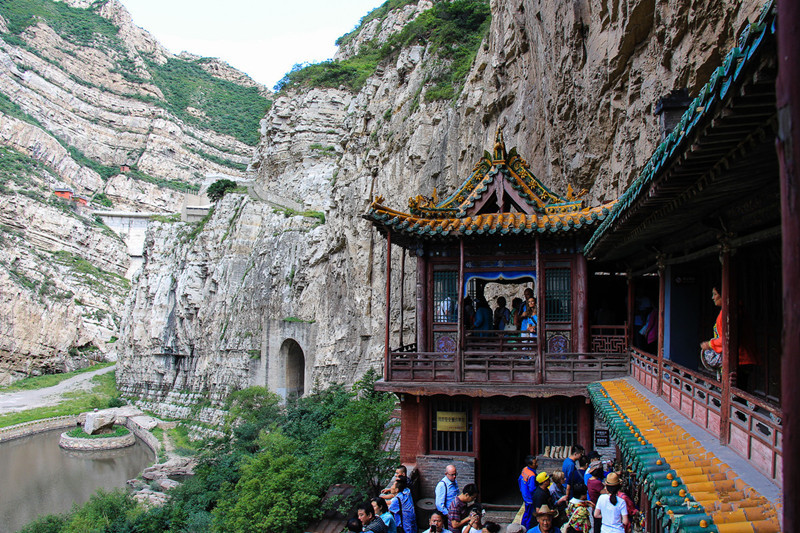
How to Plan Datong City Tour
Datong (大同), located in Shanxi Province, is a city where ancient history and rich culture converge. Known for its remarkable Buddhist heritage, ancient architecture, and vibrant local life, Datong offers an enriching experience for travelers seeking to explore China’s historical treasures.
🗓 Best Time to Visit Datong
The optimal time to visit Datong is from April to October, with May, June, September, and October being particularly pleasant due to comfortable temperatures and clear skies . These months are ideal for sightseeing and outdoor activities. However, it’s advisable to avoid the May Day (Labor Day) and National Day holidays in early October, as these periods can be crowded with domestic tourists .
🏯 Must-Visit Attractions in Datong
1. Yungang Grottoes (云冈石窟)
A UNESCO World Heritage Site, the Yungang Grottoes are a testament to Buddhist art and architecture. Located about 23.5 km from Datong’s city center, these caves house over 50,000 statues and carvings dating back to the 5th century .

2. Hanging Temple (悬空寺)
Perched on the cliffs of Mount Heng, the Hanging Temple is an architectural marvel that combines Buddhist, Taoist, and Confucian elements. It’s one of China’s most unique and picturesque temples .

3. Huayan Temple (华严寺)
This ancient Buddhist temple, dating back to the Liao Dynasty, is renowned for its historical significance and architectural beauty. It’s an excellent place to delve into the region’s spiritual heritage .
4. Nine-Dragon Screen (九龙壁)
Located in the city center, this colorful glazed brick screen wall features nine dragons and is one of the largest of its kind in China. It’s a popular spot for photography and a glimpse into traditional Chinese art .
5. Shanhua Temple (善化寺)
A well-preserved Buddhist temple in Datong, Shanhua Temple offers insights into the region’s religious practices and architectural styles. It’s an excellent place to experience local culture and history .
🍜 Savor Datong’s Local Cuisine
Datong’s culinary scene is a reflection of its northern Shanxi roots, with a focus on hearty, wheat-based dishes. Some local specialties include:
-
Sliced Noodles (刀削面): Hand-shaved noodles served in a savory broth with various toppings.
-
Yellow Cake (黄糕): A traditional sweet made from millet, offering a unique taste and texture.
-
Oat Noodles (莜面): Noodles made from oats, often served with vegetables and a spicy sauce.
-
Braised Rabbit Head (红烧兔头): A local delicacy known for its bold flavors and tender meat.
-
Instant-Boiled Mutton (涮羊肉): Thinly sliced mutton cooked quickly in a hot broth, typically enjoyed with dipping sauces.
-
Haggis (羊杂): A dish made from various offal, seasoned and cooked to perfection.
🧭 Travel Tips for a Smooth Journey
-
Getting There: Datong is accessible by train or bus from major cities like Beijing. The Datong Yungang Airport also offers domestic flights.
-
Getting Around: The city center is compact and walkable. For attractions outside the city, consider hiring a local driver or joining a guided tour.
-
Accommodation: There are various hotels and guesthouses in Datong, ranging from budget to luxury. Staying near the city center provides easy access to major attractions.
-
Language: Mandarin is the primary language spoken. Learning basic phrases or using a translation app can enhance your experience.
-
Currency: The local currency is the Chinese Yuan (CNY). ATMs are widely available, and credit cards are accepted in most establishments.
📝 Final Thoughts
Datong offers a rich tapestry of history, culture, and cuisine, making it a must-visit destination for travelers interested in exploring China’s ancient heritage. Whether you’re marveling at the Yungang Grottoes, savoring local delicacies, or immersing yourself in the region’s spiritual sites, Datong promises an unforgettable journey.
For personalized travel planning and expert guidance, feel free to contact us. We’re here to help you craft the perfect Datong itinerary tailored to your interests and preferences.












